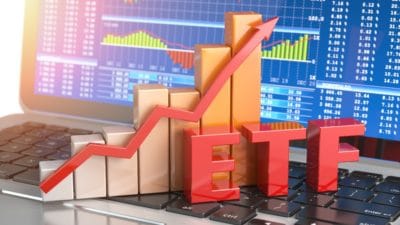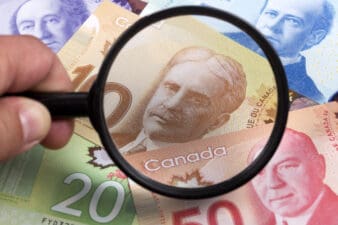Enbridge (TSX:ENB) stock has a 6.72% yield. By the standards of TSX stocks, that’s extremely high. At today’s prices, your typical TSX index fund yields about 2.5%. Enbridge’s yield is nearly three times that!
It looks like an enticing income opportunity, but, as always, a reality check is in order. Stocks don’t get high yields for no reason. Usually, they come from falling stock prices or extremely high payout ratios (“payout ratio” means dividend divided by profit). These issues have affected ENB stock from time to time, so it’s worth exploring them before you go ahead and by ENB.
High payout ratio
One potential issue with ENB stock is a high payout ratio. In its most recent full year, Enbridge had $1.28 in earnings per share, and $3.44 in dividends per share. That gives us a payout ratio of 268%, which is extremely high, suggesting that Enbridge is paying out more in dividend than it’s making in profit. This isn’t sustainable, because if you keep paying dividends in excess of earnings, you eventually run out of money.
The good news is that Enbridge’s payout ratio is a little more sensible if you use cash flow metrics. Going by distributable cash flow (DCF), Enbridge has a 72% payout ratio. That’s not as high as the earnings-based payout ratio, but it is questionable whether DCF is the best payout ratio to use. “Distributable” means “can be distributed”; it doesn’t mean free cash flow.
If we use free cash flow in place of earnings, we once again get a payout ratio above 100%. In this case, Enbridge’s payout ratio is about 117%. In my personal opinion, Enbridge’s dividend payout is not safe based on last years’ earnings or cash flows.
As for whether it’s safe based on this year’s earnings, that remains to be seen. Enbridge has a lot of things going for it that could help to increase its earnings. For one thing, it tends to lock its clients into long term contracts with set rates, so the money keeps coming in whether the price of oil goes up or down.
For another thing, it’s working on a replacement to its Line 3 pipeline that will increase the size of the pipe, thereby increasing the amount of oil that can be sent. Finally, it doesn’t have very many competitors, so it has some pricing power (though its price hikes do usually require regulatory approval).
Relatively high debt level
Another issue with Enbridge is that it has a relatively high debt level. Expansion projects like the Line 3 pipeline upgrade I just mentioned have to be paid for somehow, and if you’re paying out more than 100% of your profit as dividends, “somehow” means issuing debt or selling shares.
As you might expect, Enbridge has a relatively high debt level. In its most recent quarter, Enbridge had $72 billion in debt and $59 billion in shareholders’ equity (that is, assets minus debt). This gives Enbridge a debt-to-equity ratio of 1.22, which is higher than is normally considered ideal.
In times of rising interest rates, like the one we find ourselves in now, high debt levels can prove problematic, as they increase interest expense. So, investors will want to keep a close eye on Enbridge’s debt level.






